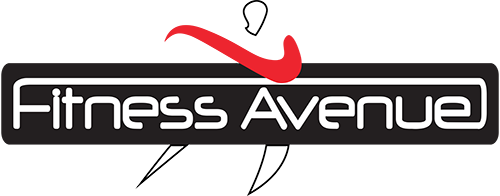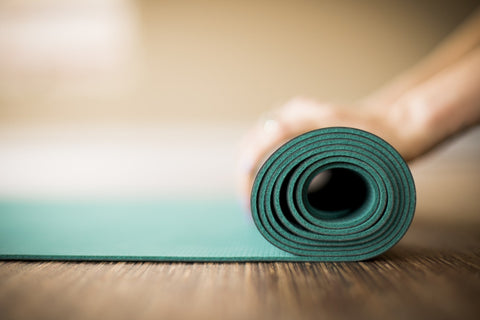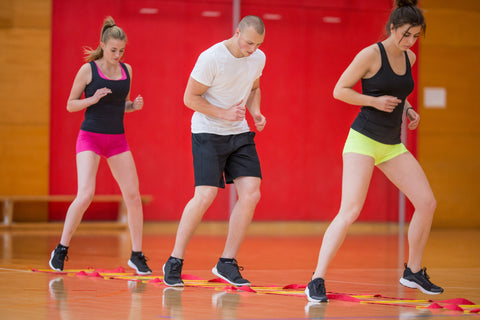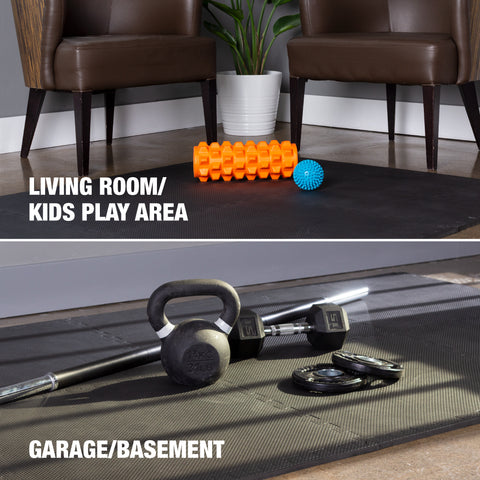Any type of exercise that involves you putting anything other than the soles of your feet on the floor can benefit from the use of a fitness mat. Mats for fitness provide cushioning and cleanliness to make sure that you get the maximum support and comfort out of your exercise routine. When considering the best fitness mats for your needs, think about the type of exercise you perform, the level of support you need, and the size that fits most appropriately in your exercise space.
Yoga Mats
Of all the mats for fitness available, yoga mats tend to be the thinnest. The goal of these fitness mats is to allow you to feel the floor with your bare feet. For this reason, most yoga mats are no more than 13 millimeters thick. These mats have a bumpy or textured surface to allow for more traction while you do certain yoga poses. You may also notice that your yoga mat seems a little sticky. This is normal, as the mats are designed to keep your feet from slipping. A beginning might prefer a thicker mat, while somebody who is experienced with yoga might like something that provides less cushion and more traction. The thinnest yoga mats can be as little as three millimeters thick, making for easy transport and just a little springiness for yoga exercises.
Pilates Mats
While yoga mats need to be thin in order to provide grip and stability, most fitness and Pilates mats are designed with cushioning in mind. Pilates mats specifically tend to range from two to three centimeters thick. Placed on a hard floor, they provide cushioning for the hips and back during Pilates exercises. You can use fitness and Pilates mats for other purposes as well, such as gymnastic training or even running in place. Fitness and Pilates mats come in various degrees of firmness. For most Pilates exercise routines, you should choose a firmer mat that provides more stability and balance. A person normally does Pilates exercises while sitting or lying down, so slipping on these fitness mats is not much of a concern.
Exercise Mats
The thickest mats for fitness, exercise mats are mainly designed for cushion, not traction. These mats are best reserved for stationary exercises and work with weights, although some gyms may have areas where the fitness mats are fully secured and thus usable for mobile activities such as sparring or certain types of gymnastics. These mats typically range from three to five centimeters thick, and erring on the thicker side is better than getting a fitness mat that is too thin. Note that not all exercise mats are built for absorbency. If you sweat a lot and intend to spend a lot of time on the fitness mat, you should look for an exercise mat that is specifically designed with absorbency in mind.
The Best Fitness Mat Materials
Regardless of the type of exercise you perform, fitness mats come in a wide variety of different materials. The most common options that you will run into include bamboo, latex, microfibers, PVC, and natural materials such as cotton. Each of these materials is detailed below along with information on what sort of exercises these fitness mats work best with.
Bamboo is a strong and sturdy material that also has antimicrobial properties to help reduce the risk of bacteria lingering on the mat after an exercise. The material is also very light, which allows for easy transport to and from different exercise locations. Despite the antimicrobial properties, however, bamboo can be difficult to clean thoroughly. This means that it starts to collect dust and dirt after long hours of use that cannot be removed without a careful hand wash. Bamboo also lacks much in the way of cushioning. These properties make this material ideal as a yoga mat, but its use in Pilates mats and exercise mats are limited.
Latex mats can come from either natural or artificial sources. Natural latex is very environmentally friendly and provides great cushioning for Pilates and intensive exercises. Synthetic latex has all the same properties of natural latex and is also less expensive, but the off-gassing process involved in its creation tends to leave it with a lingering chemical smell. Both natural and synthetic latex stick to floors well and provide great cushioning. A latex mat can be used with virtually any exercise as long as you choose the right level of thickness. The biggest thing to consider with this material is the risk of allergens. Some people are allergic to latex, which can lead to extreme discomfort and even illness after multiple exercise sessions.
Microfibers are usually made from polyester, but sometimes come from another artificial material. This material is extremely soft and comfortable on the skin. Microfiber absorbs sweat well, is non-allergenic, and can be washed with ease. As a lightweight material, it also provides the same ease of transportation as bamboo mats. The biggest downside to microfiber is that it lacks the stickiness needed to hold fast on floors made out of wood or concrete. Because of this, many microfiber mats include a PVC backing to provide extra stickiness. With the backing, microfiber mats can be used effectively with any fitness activity.
PVC, also known as polyvinyl chloride, is a flexible plastic that works well with exercises requiring thicker mats. PVC is flexible, soft, and inexpensive. This makes it an ideal fitness mat material for those shopping on a budget. It unfortunately lacks the absorbency of microfibers and is not as easy to clean as latex. PVC is also entirely artificial, often made from processes that harm the environment. Some companies use endocrine disruptors known as phthalates in the construction of PVC mats, and those materials are linked to certain illnesses and even types of cancer. If you choose a PVC mat, you should make sure to check where and how the material was created.
Finally, cotton mats are entirely natural and sometimes combined with other natural materials such as hemp or jute. These materials absorb sweat easily and remain cool even on hot days due to their ability to wick away heat and moisture. They can be cleaned by tossing them right into a washing machine. They unfortunately don’t provide much in the way of slip resistance, nor do they come in thicknesses that are ideal for Pilates or mobile exercises. Most people who opt for cotton mats use them for yoga, often with some sort of treatment applied to the bottom to help prevent slipping when used on a hardwood or concrete floor.
Size Considerations
The final factor to determine the fitness mat for you is to think about the size you need. Most fitness mats have a fairly standard size, but you need to consider whether your exercise routine might require something out of the ordinary. Most fitness mats range from 1.5 to 1.8 meters long and between 0.5 and one meter wide. This fits the majority of body types, but if you are particularly tall or overweight you might find that parts of your body hang over the mat. In this situation, it is better to seek out a larger than normal mat than to deal with the added discomfort while exercising. For stationary mats that you don’t travel with, you may simply be able to set multiple standard mats together.
You also need to consider the thickness of your mat. Use the thickness suggestions mentioned above based on the type of exercise routine you have, but make sure that you feel comfortable with the feel of the mat. If you are heavier or lighter than average, you might need a thicker or thinner mat, respectively. You can also try to use a single mat for multiple kinds of exercise, but this may not be optimal based on your routine. For example, a mat that works ideally for Pilates is likely a little too thick to function well for yoga. You could try to get a mat that is thin for Pilates but thick for yoga in an attempt to find something right in the middle, but doing so might also leave you with the undesirable situation of having a mat that doesn’t feel right with either exercise.
Storing Your Mat
Finally, you should make sure that you know how you will store a fitness mat before you make a purchase. Lightweight mats can be rolled up and carried with you, or even placed in your vehicle between exercises. Heavier mats might require more space and more planning for storage. No matter how easy or hard your mat is to store, be sure that you clean it regularly—ideally after every significant workout. A fitness mat usually has cleaning instructions listed on its tag.
When choosing which fitness mat to buy, you should consider your body type, exercise routine, and health concerns such as allergies. Browse based on these specifications. Beyond that, the advice outlined above and your knowledge of your own body will help guide you to the best fitness mat for your needs.



